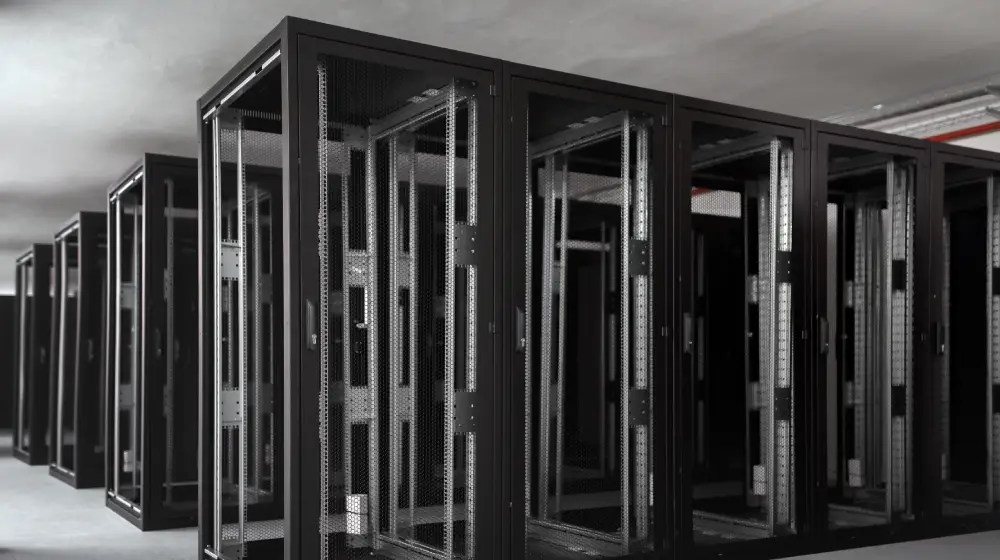
In today’s hyperconnected world, data centers have evolved into the strategic digital core of modern business operations. From enabling cloud computing and AI to supporting e-commerce and real-time analytics, these facilities are the backbone of nearly every digital experience.
According to the Data Center Construction Strategic Research Report 2024, the global data center construction market is projected to grow from $245.4 billion in 2024 to $371.7 billion by 2030, at a CAGR of 7.2%. This substantial growth underscores the increasing strategic importance and complexity of building these mission-critical assets.
Here’s a closer look at the end-to-end process of constructing a data center—and what it takes to turn a bare site into a fully functional, future-ready digital hub.
1. Feasibility & Site Planning
The process begins with identifying the optimal site. Power availability, climate, user proximity, fiber connectivity and the regulatory environment are all important considerations. With the rise of edge computing and data sovereignty regulations, companies are seeking more regionally distributed centers that can serve localized demand while maintaining compliance. Environmental impact assessments and long-term scalability projections are also critical at this stage.
2. Design & Engineering Development
Once the site is selected, the next phase of data center construction revolves around detailed design and engineering. Architects, civil engineers, MEP consultants, and IT infrastructure experts come together to develop a blueprint that balances performance, scalability, and sustainability. The layout includes server halls, power distribution rooms, mechanical zones, cooling infrastructure, and multiple layers of security—each designed to ensure optimal flow and fault-tolerant operation.
Importantly, the design is closely tied to the data center’s Tier classification, which determines its level of redundancy and fault tolerance.
According to the 2024 industry report, Tier 3 data centers—offering a strong balance between cost and high availability—are projected to grow significantly, reaching $201.4 billion by 2030. As these facilities become more complex, engineering teams must also factor in critical metrics like Power Usage Effectiveness (PUE) to enhance energy efficiency and reduce operational costs.
Additionally, modern data center construction requires future-proof planning, including flexible pathways for cooling upgrades, power expansions, and integration of next-gen technologies such as AI workloads or edge computing nodes. This collaborative and forward-looking design approach forms the technical backbone of a high-performance, resilient digital facility.
3. Procurement & Prefabrication
Modern data center construction increasingly relies on prefabricated and modular components to reduce timelines and improve quality. Equipment like power modules, cooling units and even pre-assembled white space components (like racks and cable trays) are manufactured off-site and delivered ready for integration.
This modular approach is rising globally, enabling faster deployment, especially for hyperscale and edge facilities. Key equipment procurement is carefully sequenced, ensuring that long-lead items arrive on time to maintain project momentum.
4. On-Site Construction & System Integration
After the foundation and structure are ready, the focus shifts to installing the core systems that keep the data center running. This includes mechanical, electrical and plumbing (MEP) systems. Each is installed with precision to ensure reliability and efficiency. Key components like backup generators, UPS (Uninterruptible Power Supply) systems and advanced cooling are integrated to maintain continuous operations even during power failures or extreme heat. Fire suppression systems and physical security measures are also implemented to protect the infrastructure and the data.
At the same time, the facility is equipped with smart automation systems that monitor energy usage, temperature, airflow and equipment health in real-time. These systems help improve performance and allow teams to detect and resolve issues before they escalate. Sustainability is not just a buzzword but a core principle embedded into this stage through energy-efficient designs, green building materials, and the integration of renewable energy sources wherever feasible.
5. Testing, Commissioning & Go-Live
Before a data center is completely operational, it goes through a vital process known as testing and commissioning. This procedure is intended to ensure that all systems—electrical, mechanical, safety and information technology—are properly installed and perform under the most demanding real-world conditions.
Integrated System Testing (IST) is an essential activity at this period. Unlike individual equipment assessments, IST tests all systems—generators, UPS systems, HVAC, fire suppression, access control and network infrastructure—as a single unit. These tests simulate circumstances such as power outages, cooling issues and peak loads to ensure that the data center can respond without interruption.
Beyond functionality, data centers must also meet recognized global standards to prove their reliability and resilience. Certifications from organizations like the Uptime Institute (for Tier levels) and ISO (for quality, security and environmental compliance) are not just badges—they are a testament to our commitment to quality and offer assurance to clients and stakeholders that the facility is built to handle continuous operations, unforeseen failures and evolving regulatory demands.
Once all systems are tested, calibrated and certified, the data center is officially commissioned and handed over for live operations, ready to support critical workloads from day one.
Constructing the Future with Confidence
With growing global reliance on digital infrastructure, data centers are no longer just backend assets—they are strategic enablers of growth, resilience, and innovation. As demand accelerates and standards evolve, data center construction must be faster, wiser, and more sustainable than ever before. Built through precision engineering and future-focused planning, data centers are the heartbeat of tomorrow’s digital economy.
At DC&T Global, we specialize in turnkey data center builds—merging engineering expertise, cutting-edge technology and a deep understanding of infrastructure demands to deliver secure, efficient, and future-ready facilities.
